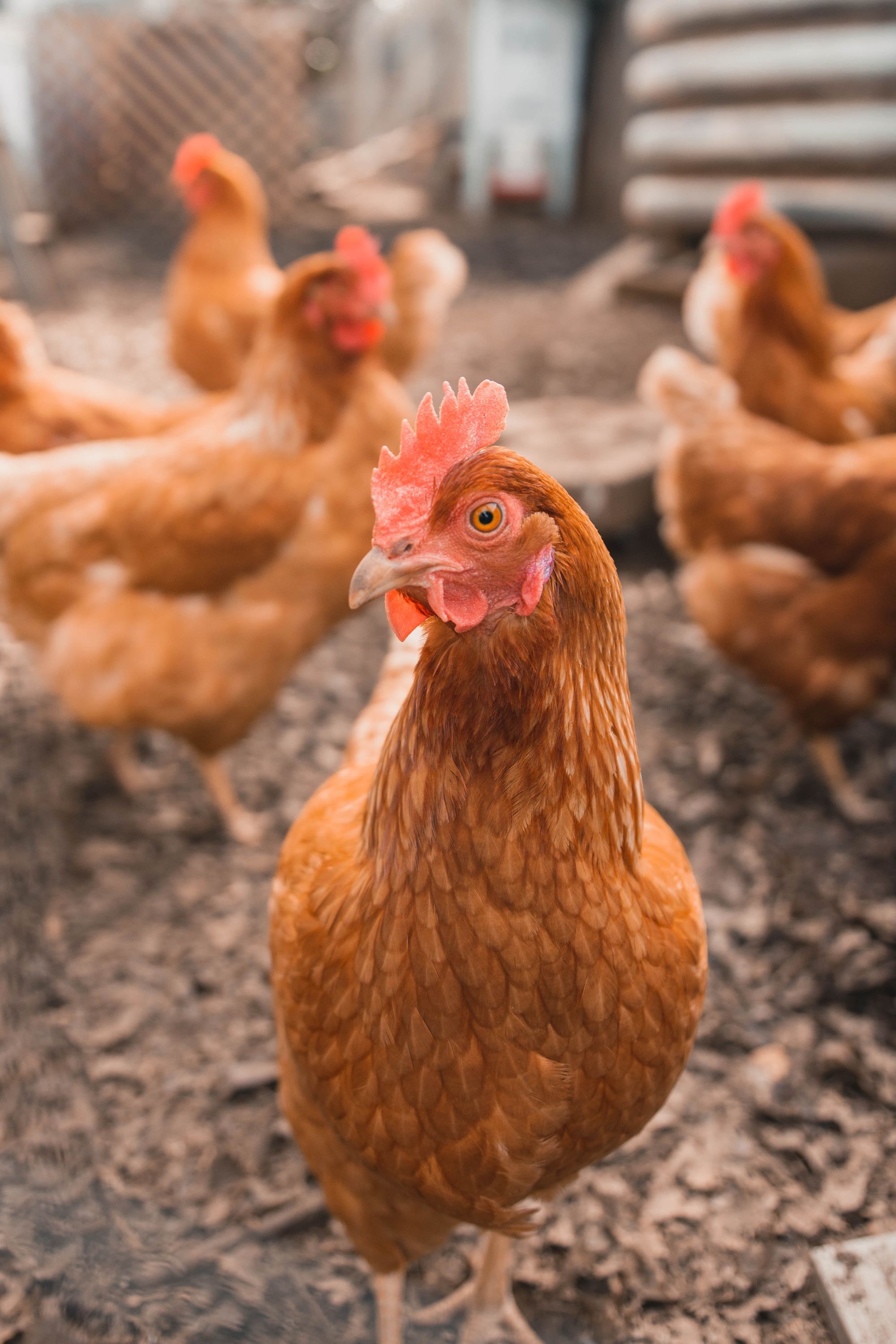Probiotics and Systems Behavior

If you want to understand what the purpose of a given system is, then you need to look at its behavior.
Recently, I read about the long-standing, wide-spread use of probiotics and prebiotics in the poultry industry. Chicken is the number one source of animal protein in the US and globally. Since the 1970s, farmers and industrial poultry-producers have been using probiotics in chicken feed, with some formulations now containing over 200 strains of beneficial bacteria.
Anti-biotic use has been increasingly phased out while health promoting pro- and pre-biotics have become more common.
From the perspective of those choosing to pay for probiotic administration for their poultry, what is the purpose of the system? What outcome are they optimizing for? Mainly profitability.
To this end, they are able to control every aspect of the environment of their chickens – their conditions of shelter, what they eat and drink, and the air they breathe.
Why do probiotics improve profitability of chicken production? They improve immunity and reduce the risk of infections. They improve digestive function so that birds are able to extract more nutrition from less feed. They reduce the incidence of costly food-borne illness in humans. They reduce the need for other medical interventions.
Probiotics in chickens make them healthier and healthier chickens are more profitable to the industry.
“More than forty years of field experience with competitive exclusion in poultry has proven it to be a worthwhile health strategy. The poultry experience with probiotics has not gone unnoticed. What started as a poultry strategy has not stayed in poultry. Competitive exclusion has been used in pigs to reduce both E. coli and Salmonella problems in baby pigs. It seems to be an effective replacement for routine administration of antibiotics in feed within the pig industry. Probiotic mixtures have also been useful for calves, particularly those under management stress . . .
These successes using probiotics to shape the animal microbiome across decades, with massive numbers of animals constituting a significant percentage of the world’s animal protein food source, then raise the question, why have we been so slow to formally embrace a parallel strategy within westernized medicine? If a farmer’s profit margins and food safety rest on decades of proven strategies of using probiotics, what exactly are we waiting for?”Rodney Dietert, The Human Superorganism
So why isn’t probiotic administration and microbiome health improvement standard in Industrial medicine? It’s inexpensive, safe, and can be very beneficial for health outcomes. And yet, it’s used hardly at all.
This tells us that Industrial Medicine does not optimize for treatments that are inexpensive, safe and beneficial for health outcomes. That is not its primary purpose.
What is the purpose of this system? What outcomes are they optimizing for?
Well, based on the behavior of this system it would also appear that there’s a strong profit motive. So what about routine, regular probiotic administration in humans? Does this system optimize for healthy humans? Are healthy humans profitable like healthy chickens?
Not really. The most profitable type of human to industrial medicine is one who is chronically ill for a long-time. Microbiome restoration to restore health and prevent chronic disease is harmful to profits. It creates less demand for visits, medication, surgery and other profitable procedures.
This system does not optimize for healthy humans. It routinely does the opposite, inappropriately recommending anti-biotics for viral infections and as a preventative measure for dental procedures, with little to no evidence of benefit but the perfect intervention for creating a better life-long customer, increasing the risk of every known chronic inflammatory disease known.
Industrial medicine practices also create antibiotic resistant infections, which was associated with an estimated 5 million deaths in 2019, according to a recent study in the Lancet . . .
(Interestingly, when I went to find this study from January 2022 to pull up the exact stat, what I hadn’t remembered was that this study was funded by the Bill & Melinda Gates Foundation and the Wellcome Trust. What do you think the study concluded in terms of how to tackle this problem?
“Understanding the burden of AMR (anti-microbial resistance) and the leading pathogen–drug combinations contributing to it is crucial to making informed and location-specific policy decisions, particularly about infection prevention and control programmes, access to essential antibiotics, and research and development of new vaccines and antibiotics.”)Murray, Christopher JL, et al. “Global burden of bacterial antimicrobial resistance in 2019: a systematic analysis.” The Lancet (2022).
Ask a five year old if investing in R&D for new antibiotics while failing to mention the use of existing probiotics with an extensive history of use as a safe and effective approach is a good idea . . . although again we go back to the original point. What counts as a good idea really depends on the outcome you’re optimizing for . . .
A systems-level analysis like this, based on the behavior of a system, rather than its verbally-stated goals, can be done without emotionality, without attachment, without blame. Systems thinking frees us of the need to blame because it recognizes that the behavior comes from the system itself, rather than any particular actor. You can blame someone in the system who appears to have a lot of control, but if you were to replace that person with someone else without changing anything else in the system, they would likely behave in the same way and the system would produce the same results.
For me, seeing how the poultry industry embraces wide-spread probiotic supplementation to maximize profits dispels any question as to whether or not wide-spread probiotic supplement is helpful to health. Because if it weren’t, then they wouldn’t be doing it. And of course this practice has spread to the rearing of other types of animals, such as pigs and cows as well.
So then from a systems perspective, the question becomes not “what works to help people become healthier?” Or “what can industrial medicine do to become safer and get better outcomes?” or “how can we prevent deadly infections?” But how can we create healthcare systems whose purpose is to produce health while minimizing costs and being profitable?

